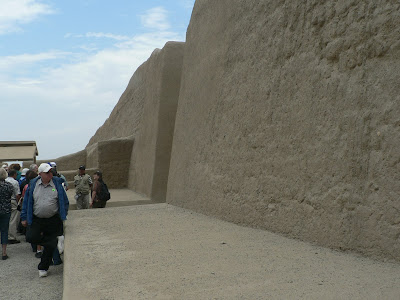The huge market in Lima has to be one of my all time favorites!
These are just a sampling of the great food items we saw.
The fish section (separate from the rest of the marketplace) had a wonderful assortment of fish.
Click on the photos for a larger view.
After you bought the fish, you could take it to the fish preparation people who would make sure that the items were ready for cooking when you took them home.
Bringing the fresh fish to market.
Everything for the hungry fish lover.
....including Octopus.
In a massive building one block away, one finds everything but the fish.
Below, the very popular Andean Purple Corn which comes only from Peru.
Below are the Peruvian Potatoes. Click on the link to learn more about the 3800 different varieties of Peruvian potatoes. When you purchase a potato in this market, they ask you what you plan to cook, and will advise you of the proper potato to use. This photo shows just a very tiny part of the potato display.
Avocados, one of my favorites.
My local grocer features Avocados from several areas, including the United States, Mexico, and Peru. The Peruvian Avocados are the only ones that I have found which do not turn black when they are ripening. It is said that the Peruvians also have a seedless Avocado, but I have not been able to locate that one.
I was surprised to see this display, offering different items for help with an assortment of ailments.
....and more remedies.
The meats looked very fresh and inviting!
After visiting the market, we were taken to a top restaurant, where a typical meal was prepared for us to sample.















